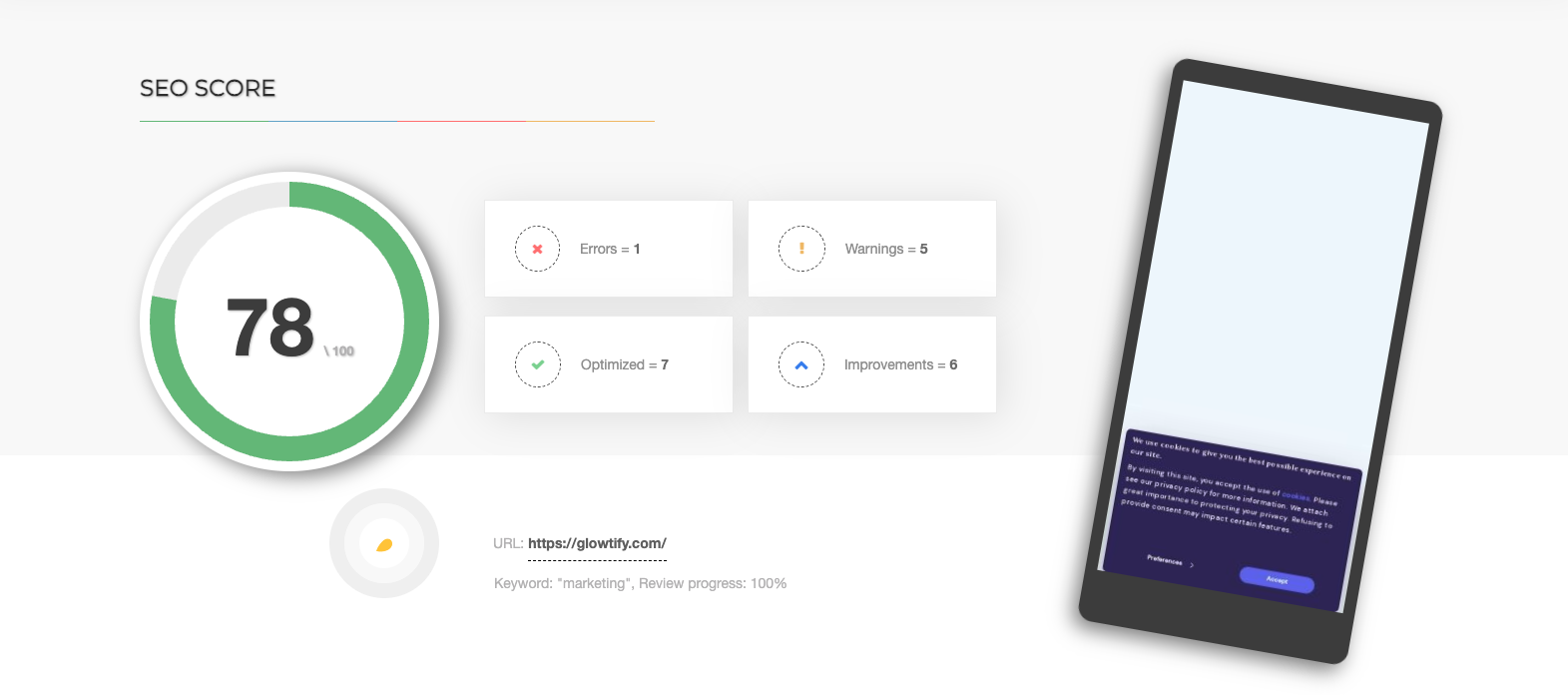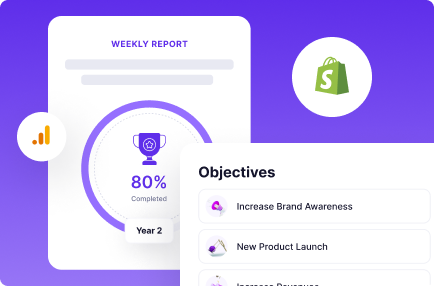Table of Contents
Running a successful ecommerce business is a year-round endeavor, and one of the biggest challenges is knowing how to use the calendar to your advantage. Throughout the year, holidays, observances, and special events present an array of unique opportunities to connect with customers in new and meaningful ways. Welcome to your in-depth guide to the Ecommerce Holiday Marketing Calendar for 2023. This guide will be your roadmap, helping you plan out your marketing strategies to align with these key dates and events.
As we navigate month-by-month through this comprehensive ecommerce holiday marketing calendar, we’ll delve into the significance of each event and holiday, and discuss the potential they hold for your business. Whether it’s a widely celebrated national holiday, a lesser-known observance, or even the changing of the seasons, every event can be an opportunity to refresh your marketing approach, better resonate with your customers, and boost your sales. So, without further ado, let’s dive in and explore how you can successfully ride the wave of the 2023 ecommerce calendar to maximize your business potential.
1. January
January unfolds a clean slate and inspires a sense of renewal and transformation. As consumers everywhere set goals, make resolutions, and reflect on the past year, ecommerce businesses have a prime opportunity to kick-start their year with momentum. The first month of the year brings with it a host of unique occasions to engage and resonate with your customers. Let’s delve into these opportunities and examine strategies to make the most of them.

New Year’s Day (January 1)
Target Audience: Almost everyone celebrates the start of a new year, making your audience quite broad for this holiday.
Strategy: New Year’s Day is a symbol of fresh beginnings, and consumers often look to kickstart resolutions and personal goals. Ecommerce businesses can tap into this optimism and aspiration with New Year sales, resolution-supportive products, or even a fresh line of items. Theme your campaigns around common resolutions such as health and wellness, organization, or self-improvement to resonate with your audience.
National Thank You Month
Target Audience: This applies to all of your customers – both new and returning ones.
Strategy: National Thank You Month in January provides an ideal opportunity for businesses to express their gratitude to customers. This can be achieved through thank you messages, customer appreciation discounts, loyalty rewards, or special gifts with purchases. By expressing appreciation, you can make customers feel valued, fostering a stronger connection and promoting loyalty and repeat business.
National Hobby Month
Target Audience: Hobbyists and those looking to develop a new skill or hobby, especially those who’ve made related New Year’s resolutions.
Strategy: National Hobby Month offers an excellent opportunity to highlight and promote hobby-related products. Be it crafting supplies, fitness equipment, books, or musical instruments, businesses can leverage this by curating hobby-themed collections or bundles. Consider offering guides or tutorials to help beginners get started, or even hosting virtual hobby-related events or workshops to engage your community.
Martin Luther King Jr. Day (January 16)
Target Audience: All customers, with particular relevance for those who value social justice and equality.
Strategy: Martin Luther King Jr. Day is a crucial occasion to honor Dr. King’s life and legacy. Ecommerce businesses can thoughtfully commemorate this day by sharing messages or content that upholds Dr. King’s principles of peace, unity, and equality. You could consider donating a portion of the day’s sales to a relevant charity or even host an educational event, reflecting your brand’s commitment to equality and social justice.
2. February
As we turn the page into February, the spirit of love and camaraderie fills the air, offering ecommerce businesses unique opportunities to captivate their customers. From the whimsical charm of Groundhog Day to the nationwide spectacle of Super Bowl Sunday, the romantic allure of Valentine’s Day, the historical observance of Presidents’ Day, and the heartwarming celebration of National Love Your Pet Day, there’s plenty for marketers to tap into. Let’s dive into these events and how best to tailor your marketing strategies around them.
Groundhog Day (February 2)
Target Audience: A broader audience, as Groundhog Day is widely recognized, if not extensively celebrated.
Strategy: Groundhog Day may not have the commercial appeal of some other holidays, but it’s still a cultural event that can be leveraged for light-hearted marketing efforts. Consider having a fun sale or promotion based on whether the groundhog sees its shadow, or create engaging social media content around this tradition to build community interaction.
Super Bowl Sunday (February 5)
Target Audience: Sports fans, particularly those interested in American football, as well as those who enjoy the communal aspect of watching the game.
Strategy: Super Bowl Sunday is a cultural phenomenon that goes beyond football. From hosting virtual watch parties to selling game-day essentials (snacks, team merchandise, viewing accessories), there are various ways to engage with the Super Bowl buzz. Remember, the Super Bowl is also known for its memorable advertisements, so it’s a great day to roll out a standout ad campaign.
Valentine’s Day (February 14)
Target Audience: Couples, individuals expressing love or friendship, and anyone seeking to treat themselves.
Strategy: Valentine’s Day is a significant retail holiday, where consumers look for gifts to express their love or appreciation to their significant others, friends, or even themselves. Ecommerce businesses can offer special sales, curated gift guides, personalized items, or themed bundles. Promote self-love and self-care products for those treating themselves on this day.
Presidents’ Day (February 20)
Target Audience: Broad audience, including those particularly interested in American history.
Strategy: Presidents’ Day often signals sales, particularly in categories like appliances, furniture, and clothing. Consider running your own Presidents’ Day discounts or promotions. This can also be a day to educate your audience on historical facts or share content related to past Presidents and their impacts.
National Love Your Pet Day (February 20)
Target Audience: Pet owners and animal lovers.
Strategy: National Love Your Pet Day is the perfect time to highlight pet-related products. Host a photo contest for your customers’ pets, offer special deals on pet products, or consider partnering with a local animal shelter for a charity drive. It’s an excellent day to show your brand’s love for pets and the people who love them.
3. March
March is a month that heralds the transition from winter to spring, filled with a variety of events and observances that offer rich marketing opportunities. With the vibrant celebrations of St. Patrick’s Day, the empowering call to action on International Women’s Day, the fun-filled quirkiness of National Pi Day, and the refreshing change that the start of spring brings, marketers can make the most of these occasions to connect with customers. Let’s explore these opportunities further and formulate effective strategies.

St. Patrick’s Day (March 17)
Target Audience: Everyone looking to join in on the fun and camaraderie of St. Patrick’s Day.
Strategy: St. Patrick’s Day offers a chance to spread the luck of the Irish with themed sales and promotions. Offer discounts on green items, promote Irish products, or run a “lucky” promotion with a chance to win discounts or prizes. This is also a great day to share engaging content on social media, perhaps showcasing your team celebrating in green attire.
International Women’s Day (March 8)
Target Audience: Primarily women, but this day is also marked by those who want to show their support and respect for women’s rights and achievements.
Strategy: International Women’s Day is an excellent opportunity to celebrate women’s achievements and call for gender equality. Highlight women-owned businesses, profile women who’ve made a significant impact, or consider donating a portion of the day’s sales to a charity supporting women’s causes. Promote products that cater specifically to your female audience or run special promotions or discounts to celebrate the day.
National Pi Day (March 14)
Target Audience: Math enthusiasts, educators, students, and anyone looking to enjoy a bit of lighthearted fun.
Strategy: National Pi Day, celebrated due to the date’s resemblance to the mathematical constant π (3.14), can be a fun day for unique promotions. Consider offering a 31.4% discount, running a promotion at 1:59 PM (in reference to 3.14159), or featuring pie-related products if applicable. Use this day to showcase the fun, personable side of your brand.
Start of Spring (March 20)
Target Audience: Virtually everyone. Consumers often get into a ‘spring cleaning’ mindset, refreshing their homes, wardrobes, and even lifestyle habits.
Strategy: The arrival of spring is associated with renewal and fresh beginnings. Highlight products that align with this theme, such as home organization items, spring fashion, outdoor goods, or health and wellness products. You could also run a “Spring Cleaning” sale to make way for new inventory. Don’t forget to refresh your website’s visuals with a spring theme to match the season!
4. April
April bursts forth with a spirit of joy and rejuvenation, and a line-up of events that ecommerce businesses can capitalize on. Whether it’s the jovial pranks of April Fool’s Day, the spiritual and familial significance of Easter, the environmental awareness driven by Earth Day, or the furry affection celebrated on National Pet Day, there’s a range of opportunities to connect with your audience. Let’s walk through these events and discuss some tailored marketing strategies for each.
April Fool’s Day (April 1)
Target Audience: Those with a sense of humor who appreciate a good-hearted prank or surprising deal.
Strategy: April Fool’s Day offers a chance to showcase your brand’s playful side. Consider running a surprising sale, creating humorous content, or launching a ‘prank’ product. Ensure your marketing efforts are all in good fun and aren’t likely to offend or alienate your audience.
Easter (April 16)
Target Audience: Those who celebrate Easter, families with children, and individuals who enjoy seasonal traditions.
Strategy: Easter provides opportunities to promote a wide variety of products. From Easter baskets, toys, and candies to spring fashion and home decor, you can leverage the occasion with themed sales or promotions. You could also host a virtual Easter egg hunt on your website or share Easter-themed content on your social media channels.
Earth Day (April 22)
Target Audience: Environmentally-conscious consumers, and anyone interested in contributing to a more sustainable future.
Strategy: Earth Day is a time to emphasize environmental responsibility. Highlight eco-friendly products, share information about your company’s sustainability initiatives, or consider donating a portion of sales to an environmental cause. Promotions or content that educate customers on how to be more sustainable can also be effective.
National Pet Day (April 11)
Target Audience: Pet owners and animal lovers.
Strategy: National Pet Day is perfect for highlighting pet-related products or sharing content that celebrates our furry friends. Host a photo contest for your customers’ pets, offer special deals on pet products, or consider partnering with a local animal shelter for a charity drive. A focus on pets can help you connect with your audience on a more personal level.
5. May
May signals the approach of summer, bringing with it a series of events ripe with marketing opportunities. From the vibrant celebrations of Cinco de Mayo and the appreciation expressed on Mother’s Day to the respectful remembrance on Memorial Day and the healthy competition during National Fitness and Sports Month, this month is filled with ways for ecommerce businesses to reach out to their audience. Let’s break down each event and design potential strategies to engage customers.

Cinco de Mayo (May 5)
Target Audience: Those celebrating Mexican culture and heritage, along with anyone who enjoys a festive occasion.
Strategy: Cinco de Mayo offers a chance to embrace and celebrate Mexican culture. Promote products that are related to the celebration (such as festive attire, decorations, or food and drink items), offer themed discounts, or showcase Mexican-made products. Be sure to handle this cultural holiday with respect and authenticity to avoid any appearance of cultural appropriation.
Mother’s Day (May 14)
Target Audience: Individuals wishing to honor mothers, mother figures, and the maternal bonds in their lives.
Strategy: Mother’s Day is a significant retail holiday. Use this occasion to offer special sales, personalized items, curated gift guides, or themed bundles that help customers find the perfect present for the moms in their lives. Offering last-minute gift options or expedited shipping can also be a great strategy to capture last-minute shoppers.
Memorial Day (May 29)
Target Audience: A wide audience, with a special focus on those remembering and honoring military personnel who have died in service.
Strategy: Memorial Day is often seen as the unofficial start of summer, so it’s an ideal time to promote summer-related products. Also, consider running a Memorial Day sale — these are common and anticipated by consumers. It’s also important to pay respect to the day’s original purpose, so consider sharing a message of gratitude or donating a portion of your profits to a veterans’ charity.
National Fitness and Sports Month
Target Audience: Health and fitness enthusiasts, as well as individuals looking to adopt a healthier lifestyle.
Strategy: National Fitness and Sports Month is a great opportunity to promote sportswear, fitness equipment, health supplements, and any other sports and fitness-related products. Engage your audience with fitness challenges, share motivational content, and collaborate with fitness influencers to expand your reach. Offering information on how your products contribute to a healthy lifestyle can also be effective.
6. June
June brings the warmth of summer and offers multiple dates and themes for ecommerce businesses to connect with their audiences. From the patriotism of Flag Day and the appreciation expressed on Father’s Day to the vibrant joy of the start of Summer and the eco-friendly focus of World Environment Day, there’s a variety of opportunities to engage your customers. Let’s delve into each occasion and formulate strategies to maximize impact.

Flag Day (June 14)
Target Audience: Patriotic citizens, those interested in American history, and anyone looking to celebrate national pride.
Strategy: Flag Day, while not a heavily commercialized holiday, provides a chance to showcase patriotic products or run a ‘Stars and Stripes’ themed promotion. Consider sharing content that tells the history of Flag Day, or offer a discount on all items that are red, white, and blue.
Father’s Day (June 18)
Target Audience: Individuals wanting to honor fathers, father figures, and paternal bonds in their lives.
Strategy: Father’s Day, much like Mother’s Day, is an important retail holiday. Offer special promotions on popular gifts for dads, create curated gift guides, or offer personalized products for an extra special touch. Fast shipping options for last-minute shoppers can also give you an edge over competitors.
Start of Summer (June 21)
Target Audience: Virtually everyone, but especially those planning vacations or outdoor activities.
Strategy: The start of summer is synonymous with outdoor living, vacations, and a general uplifting of spirits. Highlight summer essentials like outdoor furniture, grills, beachwear, travel gear, and other related products. Consider a “Hello, Summer” sale or provide summer-themed content to engage your customers.
World Environment Day (June 5)
Target Audience: Environmentally-conscious consumers, and those interested in contributing to a sustainable future.
Strategy: World Environment Day is a chance to showcase your brand’s commitment to sustainability. Highlight eco-friendly products, share content about how your business is reducing its environmental footprint, or offer a special promotion on sustainable products. You could also consider a partnership with an environmental charity, committing a portion of your sales on this day to support their work.
7. July
July, marked by high summer, is full of events that ecommerce businesses can harness to connect with their customers. From the nationwide celebrations on Independence Day and the anticipation of Amazon Prime Day to the sweet celebrations of National Ice Cream Day, there are plenty of opportunities to heat up your marketing efforts. Let’s explore each event and shape some strategies.
Independence Day (July 4)
Target Audience: Patriotic individuals and families, essentially everyone celebrating this national holiday.
Strategy: Independence Day is an excellent opportunity to run a themed sale or promotion, with many customers anticipating deals. Highlight summer products, patriotic items, or simply offer a site-wide discount. Remember to incorporate patriotic colors and themes into your promotional content for a festive touch.
Amazon Prime Day (Mid-July, exact date varies)
Target Audience: Amazon Prime members and online shoppers looking for good deals.
Strategy: If you sell products on Amazon, Prime Day is your time to shine. Prepare by optimizing your listings, managing inventory, and planning discounts well ahead of time. If you’re not on Amazon, you can still take advantage of this day by offering competitive deals or a “Black Friday in July” sale.
National Ice Cream Day (Third Sunday in July)
Target Audience: Ice cream lovers, which let’s face it, is pretty much everyone.
Strategy: If your ecommerce business sells food items, consider promoting any ice cream related products. If not, you can still participate by having fun on this day. Offer ‘sweet’ deals, run a contest asking customers to share their favorite ice cream flavor, or share content related to this delicious treat. Remember, marketing can be fun and a day like this is perfect for showing your brand’s lighter side.
8. August
August, the last full month of summer, is characterized by back-to-school shopping, and holidays that celebrate connections. With events like International Friendship Day and National Sisters Day and the overall back-to-school season, businesses have many chances to engage audiences and drive sales. Let’s unpack each opportunity and shape effective strategies.

Back-to-School Season
Target Audience: Students of all ages, parents, and educators.
Strategy: Back-to-school season is a significant retail event that offers ample opportunities to sell products ranging from clothing and footwear to school supplies and electronics. Offer back-to-school bundles, student discounts, or run a sales event to attract customers. Content that offers tips for a successful school year can also be a hit with parents and students alike.
International Friendship Day (August 2)
Target Audience: Friends everywhere, from besties to long-distance pals.
Strategy: Celebrate the spirit of friendship by offering “two for one” deals, discounts on friendship bracelets or related merchandise, or promoting products perfect for gifting. Encourage user-generated content by asking your audience to share stories or photos that highlight friendship.
National Sisters Day (First Sunday in August)
Target Audience: Individuals with sisters or sister-like figures in their lives.
Strategy: Much like Friendship Day, National Sisters Day is a great time to promote gifting. Offer discounts on products popular with your female audience or suggest gift ideas for sisters. Engage with your audience by asking them to share favorite memories with their sisters or running a sister-themed contest.
9. September
September ushers in autumn and presents unique marketing opportunities for ecommerce businesses. The celebration of Labor Day and Grandparents Day, the start of the autumn season, and International Coffee Day are all occasions that can inspire a variety of promotions. Let’s dive into each event and build targeted strategies.
Labor Day (First Monday in September)
Target Audience: Virtually everyone, as this holiday signals the unofficial end of summer and the start of the school year.
Strategy: Labor Day is traditionally a big sales event. It’s an excellent time to clear out summer inventory and introduce fall products. Offer special promotions or discounts to encourage shopping. A sale is expected by consumers on this day, so not participating may lead your customers to shop with competitors.
Grandparents Day (First Sunday after Labor Day)
Target Audience: Individuals wanting to honor grandparents or older loved ones in their lives.
Strategy: Grandparents Day provides an opportunity to promote products that would make suitable gifts for grandparents. Curate a collection of gift ideas, offer a discount on certain items, or encourage customers to share stories about their grandparents on social media for a personalized touch.
Start of Autumn (September 22)
Target Audience: Individuals who enjoy autumn-themed products, anyone interested in home decor, fashion, and seasonal items.
Strategy: The start of autumn can be marked by highlighting fall products, like home decor, fashion items, or any product that aligns with the cozy, warm aesthetic of the season. Consider a “Fall Favourites” collection or a promotion to welcome the new season.
International Coffee Day (September 29)
Target Audience: Coffee lovers and anyone who starts their day with a cup of joe.
Strategy: If you sell anything coffee-related, this is your day. Offer discounts on coffee products, share content about the origins of coffee, or partner with a coffee brand for a giveaway. Even if you don’t sell coffee-related products, you can engage with your audience by sharing your team’s favorite coffee drinks or asking your audience about their favorite coffee.
10. October
October brings a chill in the air and an array of opportunities for ecommerce businesses to captivate their audiences. From the sales of Columbus Day to the spooky allure of Halloween, and the sweet celebrations of National Dessert Day, let’s delve into the marketing potential each event holds and propose some winning strategies.

Columbus Day (October 9)
Target Audience: Almost everyone, given that this is a nationally recognized holiday.
Strategy: Columbus Day is a big retail holiday, particularly for businesses selling home goods, clothing, and cars. Offering special Columbus Day discounts or a weekend-long sale can draw in customers. Consider incorporating themes of discovery and exploration into your promotional content.
Halloween (October 31)
Target Audience: Costume enthusiasts, parents, candy lovers, and fans of everything spooky.
Strategy: Halloween presents opportunities for businesses across various industries. Sell Halloween-related products? Feature them prominently. Don’t have any Halloween items? Get creative and “Halloween-ify” your products or packaging. Run a social media costume contest or share Halloween-themed content to engage your audience.
National Dessert Day (October 14)
Target Audience: Sweet-toothed consumers, bakers, and dessert enthusiasts.
Strategy: If your ecommerce store sells dessert-related products or food items, offer discounts or promote special bundles. Even if you don’t, consider giving a free dessert with every purchase made that day or team up with a local bakery for a cross-promotion. Use this day to engage with your audience by sharing your team’s favorite dessert or asking customers about theirs.
11. November
November is a crucial month for ecommerce businesses with a cascade of high-profile events. From honoring the service of veterans to giving thanks, and seizing the opportunity of massive sales events, there are countless ways to engage customers and boost sales. Let’s explore each occasion and devise targeted strategies.
Veterans Day (November 11)
Target Audience: Veterans, active military personnel, and their families and friends.
Strategy: Offer special promotions or discounts for veterans and active military personnel. This not only shows your gratitude for their service but also helps to drive sales. Sharing content that honors veterans and their stories can also boost engagement.
Thanksgiving Day (Fourth Thursday in November)
Target Audience: Almost everyone, as it is a major holiday celebrated across the country.
Strategy: Thanksgiving is the perfect time to show customer appreciation. Offering Thanksgiving-themed sales, launching new products, or sharing content that centers around gratitude can help to connect with your customers on a more personal level.
Black Friday (Day after Thanksgiving)
Target Audience: Discount shoppers, holiday gift buyers, and basically anyone looking for a good deal.
Strategy: Black Friday is one of the biggest shopping days of the year. Offering significant discounts, limited-time offers, and exclusive products can help drive sales. Consider extending store hours (for physical locations) or ensuring your website can handle increased traffic.
Small Business Saturday (Saturday after Thanksgiving)
Target Audience: Supporters of local and small businesses.
Strategy: If you’re a small business, this day is for you. Highlight what makes your business unique and why supporting small businesses is essential. Offer special promotions or host an event (online or offline) to celebrate.
Cyber Monday (Monday after Thanksgiving)
Target Audience: Online shoppers looking for deals after Black Friday.
Strategy: Cyber Monday is another massive sales event. Similar to Black Friday, consider offering substantial discounts, “cyber doorbusters,” or exclusive online products. Email marketing can be particularly effective for this online shopping event.
Giving Tuesday (Tuesday after Thanksgiving)
Target Audience: Those interested in charitable activities and giving back to the community.
Strategy: Giving Tuesday is a global day of giving. Partner with a charity and donate a portion of the day’s proceeds or promote products where a portion of the sale goes to a charitable cause. This not only helps a good cause but also builds a positive brand image.
12. December
As the final month of the year, December is a crucial period for ecommerce businesses. The holiday season reaches its peak with Christmas, and the end-of-year sales opportunities are massive. Let’s discuss how each event can be optimized for maximum customer engagement and conversion.

Christmas Eve (December 24)
Target Audience: Last-minute shoppers, gift-givers, and holiday enthusiasts.
Strategy: Promote last-minute gift ideas, offer expedited shipping or local pick-up options for those who’ve left their shopping until the very end. An email blast with the subject line “There’s still time!” could be the nudge those procrastinators need.
Christmas Day (December 25)
Target Audience: Almost everyone, as Christmas is celebrated widely.
Strategy: Since most people will be home with their families, it’s a great time to engage with them on social media. Share heartfelt holiday messages, run a Christmas Day special, or start promoting post-Christmas sales.
Boxing Day (December 26)
Target Audience: Bargain hunters and shoppers looking to spend Christmas money or gift cards.
Strategy: Boxing Day is traditionally a day for sales. Offer significant discounts to clear out your holiday inventory. Shoppers will be looking for deals, and this is an excellent opportunity to increase sales before the year ends.
New Year’s Eve (December 31)
Target Audience: Nearly everyone can be targeted on this universally celebrated day.
Strategy: As the final day of the year, New Year’s Eve offers a chance to reflect on the past year and build anticipation for the year ahead. Run a “year-end” sale, ask followers to share their New Year’s resolutions, or give a sneak peek of what’s coming in the new year. It’s all about creating excitement and a sense of fresh beginnings.
Final Thoughts
Planning your ecommerce marketing around holidays and key events throughout the year is an effective way to engage with your audience and boost sales. By aligning your campaigns with the seasons and holidays, you can meet your customers in their current mindset and capitalize on the opportunities these occasions present. But remember, the most important aspect is to remain authentic and true to your brand’s values and mission. The strategies mentioned in this article are merely starting points, but the success of your marketing efforts will largely depend on how well you understand your audience and cater to their unique needs and interests.
While this calendar provides a roadmap for 2023, it’s important to stay adaptable and respond to unexpected changes or new opportunities that may arise. Monitor your campaigns’ performance regularly, and don’t be afraid to experiment and tweak your strategies based on your results. The key to ecommerce success lies in a balance of planning and flexibility. With a well-thought-out marketing calendar as your guide and a willingness to adapt as needed, you’re well on your way to a successful year in ecommerce.

Want more SEO traffic?
Discovering the secret to increasing your website’s traffic could be as simple as accessing this Free SEO analyzer tool!
Try it - it's free

